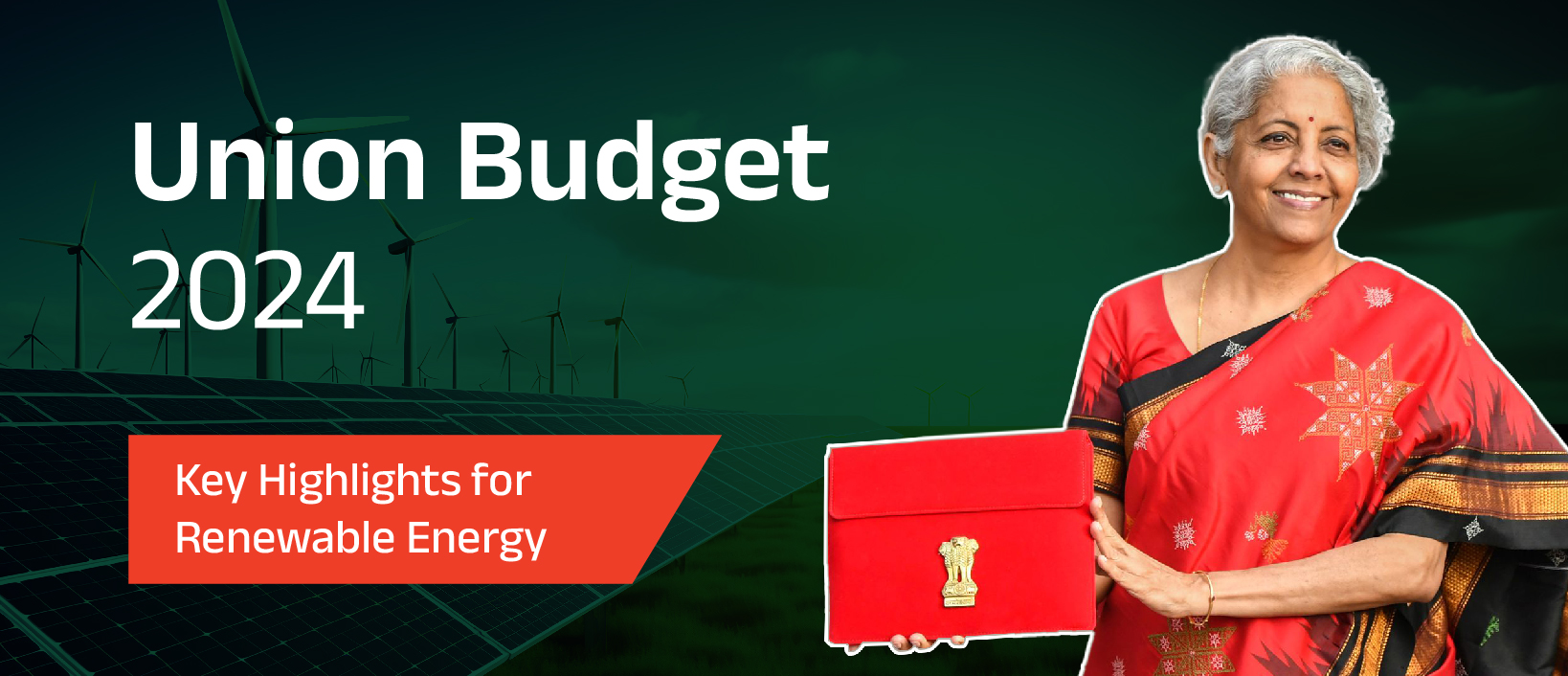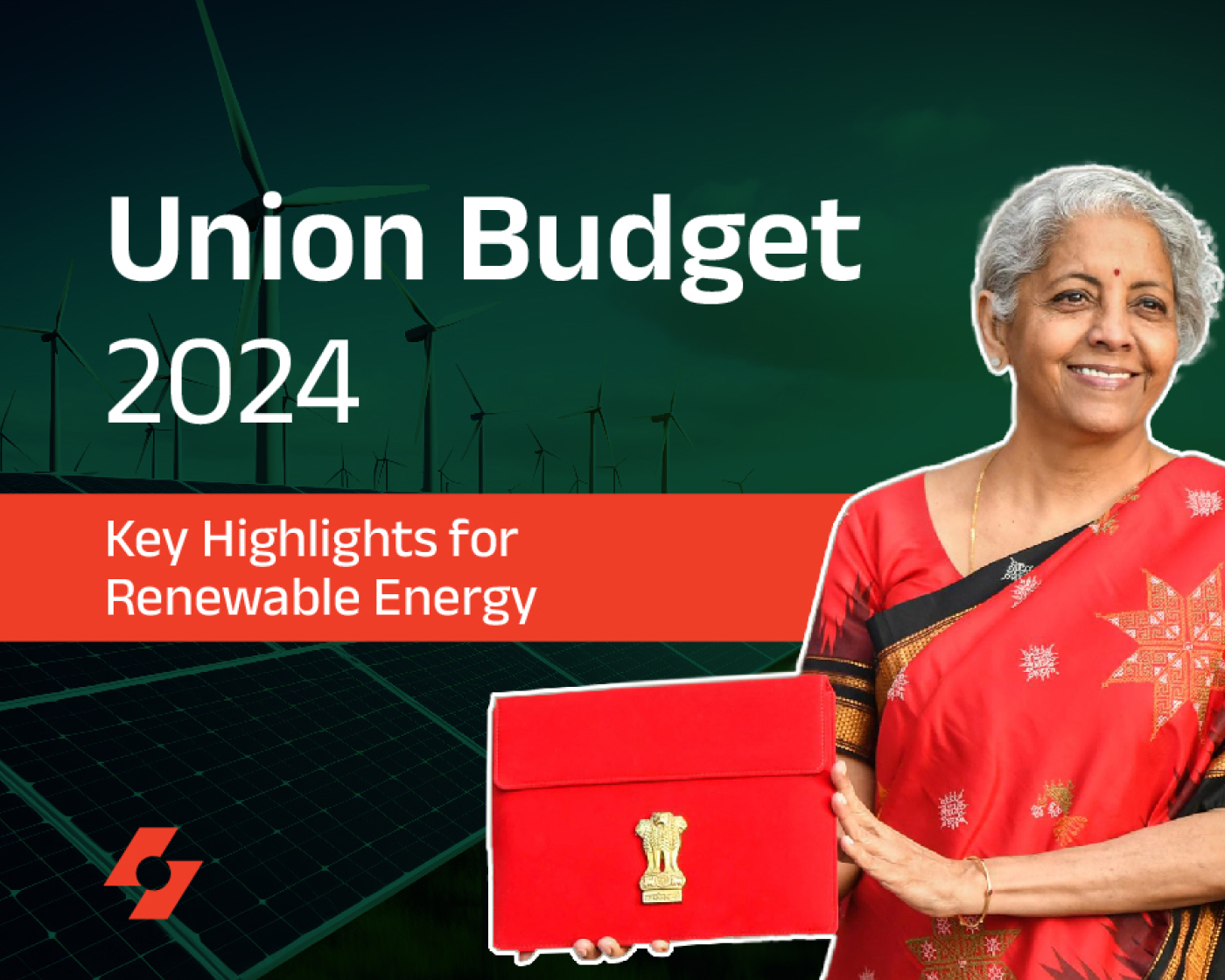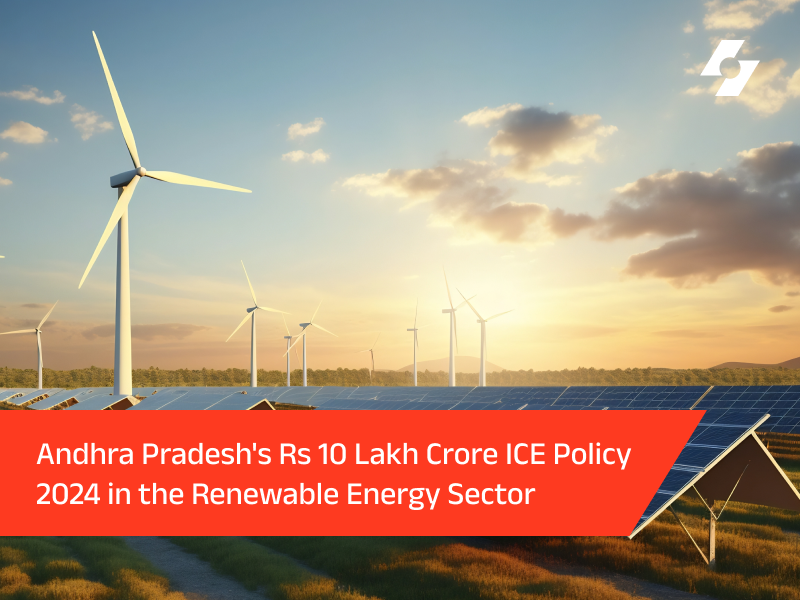India’s ambitious target of 500 GW of installed renewable energy capacity by 2030 is gaining serious momentum. This budget day has been a significant day for Indian businesses. The focus on new and renewable energy is fascinating. As per the resources, the Union Budget 2024 allocated ₹19,100 crore specifically to the new and renewable energy sector. An almost 142% increase year over year has sent an unequivocal signal from the government: clean energy is paramount. This huge budget allocation for renewable energy is going to bring strong support for the deployment of clean energy and a wave of new opportunities for Indian businesses—all very exciting. What does this budget really mean for the renewables sector?
What are some of the key announcements, and what effect can it have on the solar, wind, and other renewable energy sectors? We will examine in detail the financial support and incentives that have been provided and evaluate their overall impact on the sector. Read on to understand the Budget 2024 on Renewable Energy and unravel the promising future for renewables in India!
India’s ambitious target of 500 GW of installed renewable energy capacity by 2030 is gaining serious momentum. This budget day has been a significant day for Indian businesses. The focus on new and renewable energy is fascinating. As per the resources, the Union Budget 2024 allocated ₹19,100 crore specifically to the new and renewable energy sector. An almost 142% increase year over year has sent an unequivocal signal from the government: clean energy is paramount. This huge budget allocation for renewable energy is going to bring strong support for the deployment of clean energy and a wave of new opportunities for Indian businesses—all very exciting.
What does this budget really mean for the renewables sector? What are some of the key announcements, and what effect can it have on the solar, wind, and other renewable energy sectors? We will examine in detail the financial support and incentives that have been provided and evaluate their overall impact on the sector. Read on to understand the Budget 2024 on Renewable Energy and unravel the promising future for renewables in India!
Overview of Union Budget 2024
The Budget for the Union of 2024 envisioned development in India, with an emphasis on generating jobs and infrastructural development with skilling. There was a roadmap outlined for the complete transformation of India into a developed nation by 2047. It focused on key areas like agriculture, employment, education, social justice, urban development, energy security, and innovation. The budget also underscored the commitment of the government to the cause of sustainable development and the overall objective of creating a favorable business environment.
Major Announcements for Renewable Energy Budget
The renewable energy budget 2024 has unveiled several key initiatives to accelerate the adoption of renewable energy. They are as follows:
PM Surya Ghar Muft Bijli Yojana
The Government of India has announced a scheme for the installation of rooftop solar plants in 1 crore households in the next five years. Through this scheme, the government will give free electricity up to 300 units per month to those households. The scheme provides financial incentives for rooftop solar and tries to move away from conventional power sources.
Small & Modular Nuclear Reactors
India is also involving the private sector in developing small and modular nuclear reactors. The reactors are much smaller in scale and more flexible than the conventional nuclear power plants, hence finding applications in several varied locations and numerous applications. The government envisions the prospect of nuclear energy as a clean and reliable source of energy and seeks to increase its contribution to the country’s energy mix.
NTPC-BHEL Joint Venture
The country’s two giant public sector undertakings, NTPC and BHEL, are getting together to set up an 800 MW Advanced Ultra Super Critical Thermal Power Plant. While being a thermal power project, it showcases the will of the government to increase installed capacity for generating more power to meet increasing electricity demand.
Roadmap for Hard to Abate Sectors
The Indian government is, in essence, transitioning from energy efficiency to emission reduction in hard-to-decarbonize sectors. At a very fundamental level, this means stepping out of the Perform, Achieve and Trade (PAT) scheme and into creating the Indian Carbon Markets, thereby incentivizing the industry to reduce its carbon footprint by introducing the concept of cleaner technologies.
Taxonomy Development
It is in the process of developing a taxonomy, otherwise referred to as the classification system, for green finance. This would be able to identify environmentally sustainable economic activities and assist in the mobilization of capital into such projects that are climate-friendly. With this step, the government of India is opening up more capital for climate change adaptation and mitigation while hastening the green transition process of the country.
Pumped Storage Policy
The government plans to roll out a policy to promote pumped storage projects in the next five years to facilitate the integration of renewable energy. It is to encourage the development of pumped hydro storage projects to increase the share of renewable energy integration into the grid. This excess energy stored during lean periods by pumping water to an upper reservoir releases the same amount during peak demand periods by generating electricity. The policy shall provide incentives and support for storage facilities to be built up for stable and reliable power.
Custom Duty on Solar Glass
The Indian government has imposed 10% basic customs duty on the importation of solar glass with effect from 1st October 2024. This move, aimed at protectionist policies for the domestic industry in solar glass-making, may prove positive in the local production of solar glass. However, it may result in the rising prices of solar modules in the short term.
These initiatives therefore represent the strong commitment of India toward clean energy, energy independence, and climate action. The government tries to achieve the most ambitious set of climate goals by diversification of its sources, promotion of renewable energy, and the promotion of technologies that are supportive of energy storage.
Solar Energy
Solar energy has been a star performer in India’s renewable energy sector, and the budget continues to build on this momentum.
- Total Allocation of Solar Budget 2024: The government allocated Rs 8,500.35 crore to solar power (grid), a significant increase from 2023-2024. Total solar energy funding rose to Rs 16,394.75 crore in 2024-2025, with an increase of 271% from the previous budget.
- Increased Production Linked Incentive (PLI) Scheme: The PLI scheme for high-efficiency solar modules has been expanded to promote domestic manufacturing and reduce reliance on imports.
- Green Hydrogen Mission: The renewable energy budget 2024 is Rs 600 crore for the National Green Hydrogen Mission.
- Rooftop Solar: It is said that the PM Suryaghar Muft Bijli Yojana has been launched in the green energy budget 2024 for the installation of rooftop solar panels, and under the scheme, 1 crore households will get free electricity up to 300 units per month. This is not all; it has further initiated incentives for rooftop solar installations by announcing a Pradhan Mantri Suryodaya Yojana, which would make the installation of solar rooftops more affordable for commercial and residential consumers.
Wind Energy
Wind energy, another cornerstone of India’s renewable energy mix, also received attention in the budget.
- Total Allocation of Budget 2024: The government allocated Rs 851 crore to the program for wind and other renewable energy in the Union Budget 2024-25.
- Wind Energy Farm Development: The renewable energy budget 2024 has included provisions for simplifying land acquisition and grid connectivity for wind energy projects. It will address long-standing challenges faced by the industry.
Financial Support and Incentives for Renewable Energy
The government has introduced fiscal incentives that will help catalyze investments in renewable energy.
- Green Bonds: The broadened scope of green bonds, proposed in the renewable energy budget 2024, aims to suck more capital toward projects in renewable energy. With Rs 20,000 crore of sovereign green bonds, it is now going to be easier to access finance for green projects by businesses.
- Infrastructure Financing: The government has outlined plans to improve access to affordable financing for renewable energy projects, especially for small and medium-sized enterprises.
The Implication of Budget 2024 on Renewable Energy Industry
The Renewable Energy sector in India has to take some major bearings on the Union Budget 2024, which includes:
- Investment Boost: Moreover, due to the improved budgetary provision to the sector of Renewable Energy, supportive policies, and Renewable Energy Schemes, money in thousands and lakhs is sure to turn this sector into a favorite of domestic as well as foreign investors in India.
- Employment Generation: As the industry shifts towards renewable energy there will be the generation of many jobs as each value chain is developed.
- Technology Adoption: In particular, the focus of the renewable energy budget 2024 is on research and development of renewables is believed to boost the usage of advanced technologies in the field of renewable energies.
Potential Avenues for Indian Business
Several avenues are open for business in this sector of renewable energy in India. In manufacturing, the push would be for companies that make solar modules, wind turbines, and other related components domestically. Development of Renewable Energy Projects: Wind and Solar Farms are attractive opportunities. On the technology-innovation side, research and development of new solutions related to renewable energy are areas of high potential return. With rising demand in this financing and advisory segment, financial institutions and consulting firms should win too.
Future Outlook for Renewable Energy in India
India is all set to take up a global leadership role in renewable energy, meeting not only its own needs in energy but also exporting clean energy solutions to the rest of the world. The road ahead will be highly challenging but replete with immense opportunity. Capitalizing on the right policy environment and leveraging the enabling power of technological development will give a Indian business a frontline role in shaping India’s renewable energy future.
Subscribe to our newsletter




